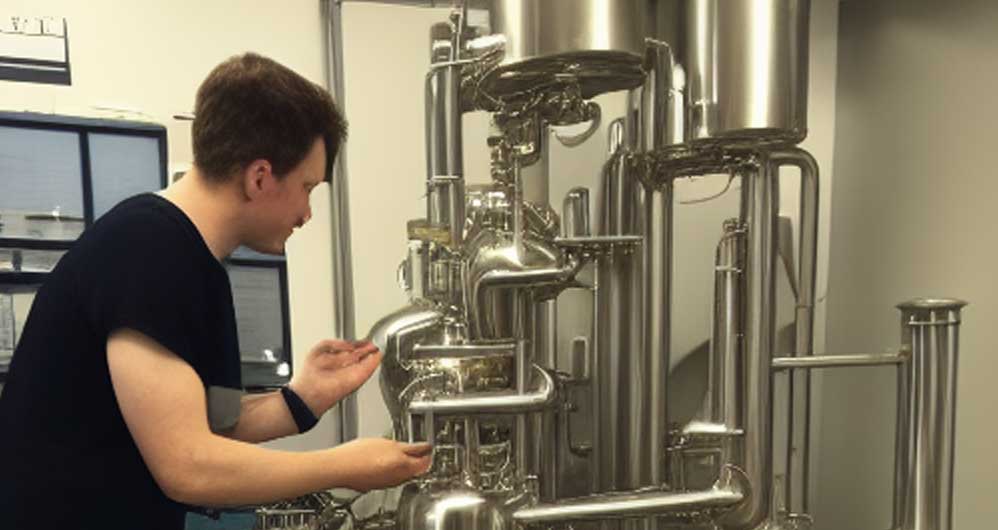Making your own lavender oil

A guide for tiny, small and large scale production
Did you know that in addition to being a beautiful purple flower with a pleasant aroma, lavender is also an essential oil that has many uses? In fact, it’s the most commonly used essential oil in the U.S. Unsurprisingly, there are many commercial uses for lavender essential oil. You can find it as an ingredient in perfumes and colognes, soaps and lotions, and even toothpaste, cat litter, and dog treats! But if you are like most people who enjoy using natural oils at home instead of store-bought products with artificial fragrances and chemicals, you might be wondering if you can make your own lavender essential oil at home.
Fortunately, you can! As ever, there are simple (but not very efficient) ways or more complex but more effective ones. There are basically three mays of doing it; use a carrier oil such as coconut oil to dissolve it in, extract it by steam distillation (for which you'll need a still) or, believe it or not, extract it with liquid carbon dioxide - by far the most efficient way, but one requiring specialised equipment. Let's look at them all.
The DIY method
To make lavender at home, pick the flowers at their best. It is important to allow the lavender plants to fully dry; any moisture can spoil the finished product. This can take several weeks, especially if you are drying them in an outdoor environment. It's possible to use a little heat but gentle only; too hot and it will drive off volatile elements in the oil.
Then add the dried lavender flowers to a pan containing an edible 'carrier oil' (coconut, almond, even sunflower if you must), cover the pan and then slowly heat the mixture until it’s almost boiling. The temperature needs to reach about 212 degrees Fahrenheit for about 30 minutes. Let it cool, pour the mixture into an airtight jar, close the jar and place it in a dark and dry area.
For the first few days at least the flowers are likely to float to the top ofthe oil so shake the jar every other day to keep the plants mixed with the carrier oil.
Leave the mixture until as much aspossible of the lavender oil has dissolved into the carrier oil. This can take anywhere from 1-8 weeks ; some people leave it for several months. Rremove the flowers by straining through a cheesecloth. You now have lavender oil.
The drawbacks of this method are threefold. Firstly you will be heating up a pan full of oil to a hight temperature; not the safest way of doing things, and you will lose some of the volatile components if you let it boil. Secondly this won't be pure lavender oil; most of it will be the carrier oil. Thirdly, unless you are very patient it can seem a long wait!
The semi professional method
This is simple but only if you have the right equipment. You will need a still; this is a similar device that some people use to make moonshine alcohol, but unlike distilling alcohol distilling lavender oil is perfectly legal!
At it's simplest, you put the plants including the stems into a large container (don't pack it in too tightly) then pass hot steam through it. Be sure the steam is hot before passing it through the flowers. Collect the steam in a separator funnel. The oil will float to the surface and after it has cooled you can draw off the water condensate, leaving concentrated lavender oil.
The drawbacks? You will need to buy purpose made distillation equipment; this can cost anywhere between a few hundred pounds and several thousand so it isn't economical on a small scale. The oil will also contain a certain amount of water; this can be extracted using chemical solvents but you really need to know what you are doing!
The full pro method
This involves the use of liquid CO2. Carbon dioxide (CO2) is viewed as a bit of a bogeyman these days but bear in mind that every tree, every plant, every blade of grass is mainly made from it. Without atmospheric CO2 the world would be completely lifeless.
You need what is called a supercrytical CO2 production system. Again, at it's simplest, the oil in the lavender is dissolved in liquid CO2; which is then itself evaporated away. This could take a few weeks but it leaves a highly purified oil, and produces maximum yields.
Disadvantage? You will need to invest heavy money so it is only for the large scale manufacturer, creating a premium product.